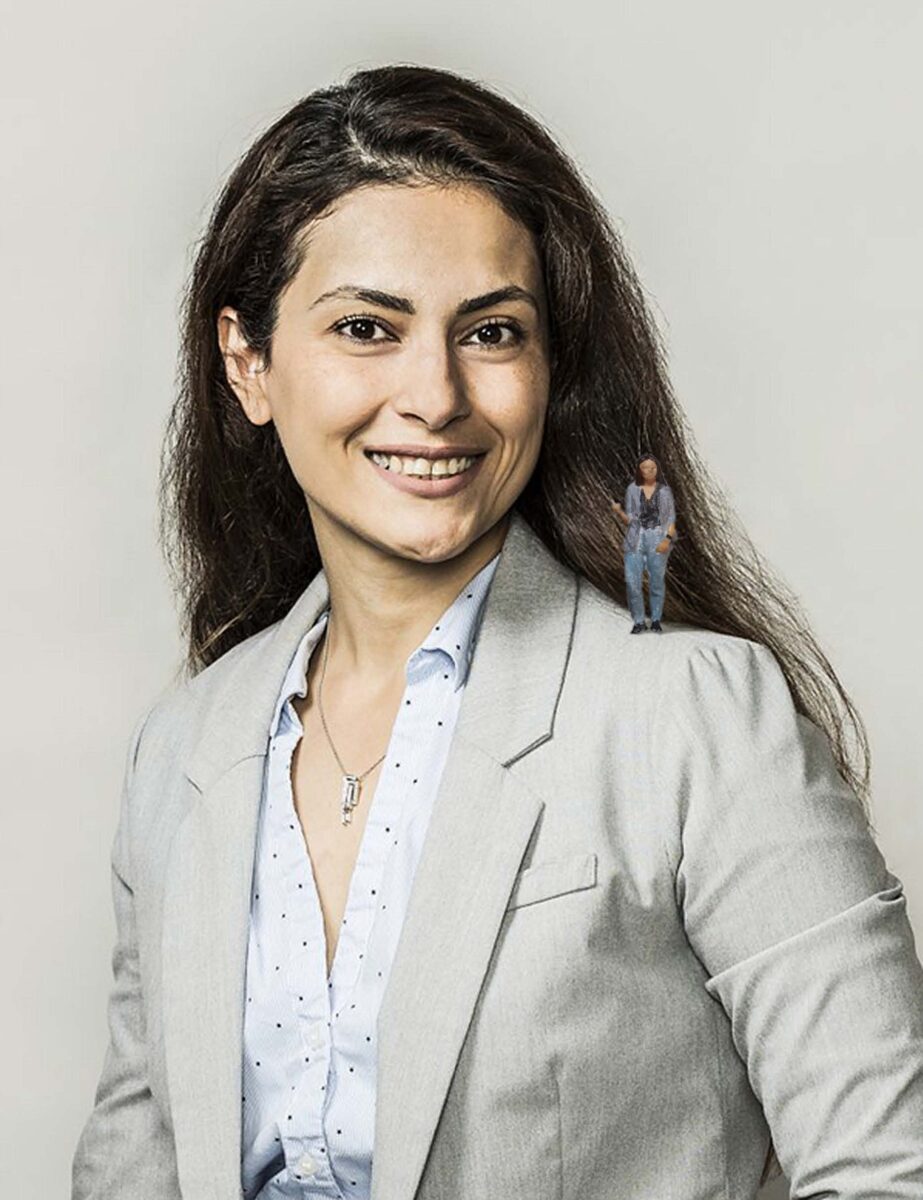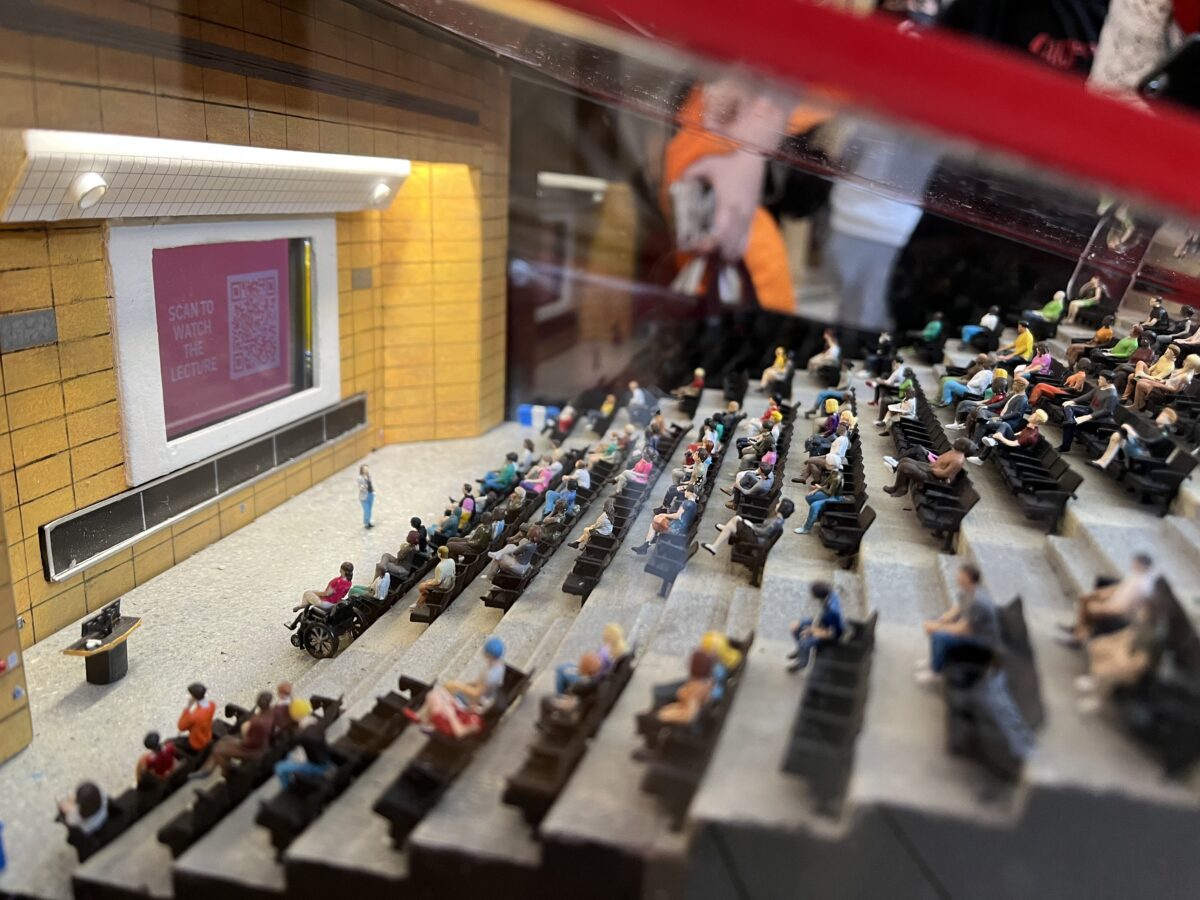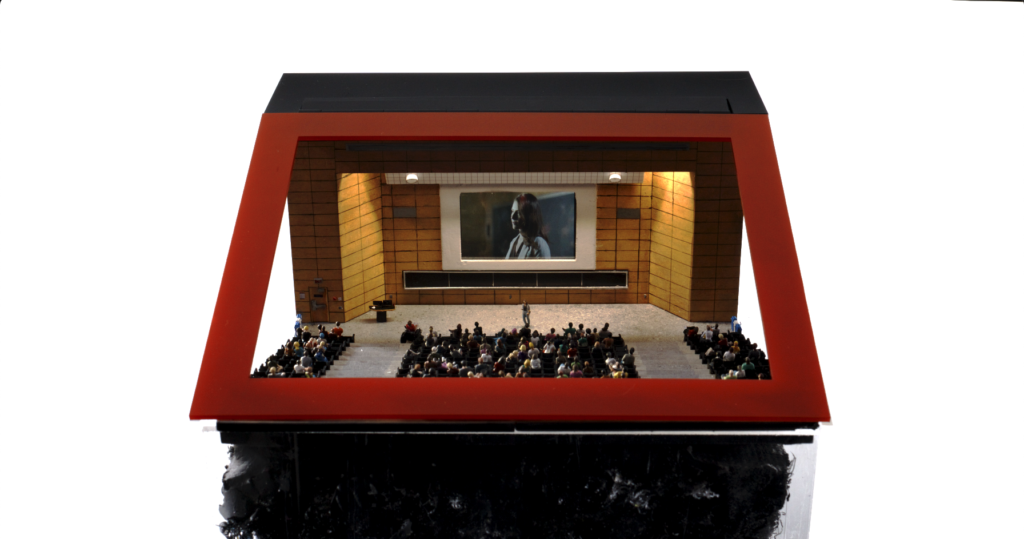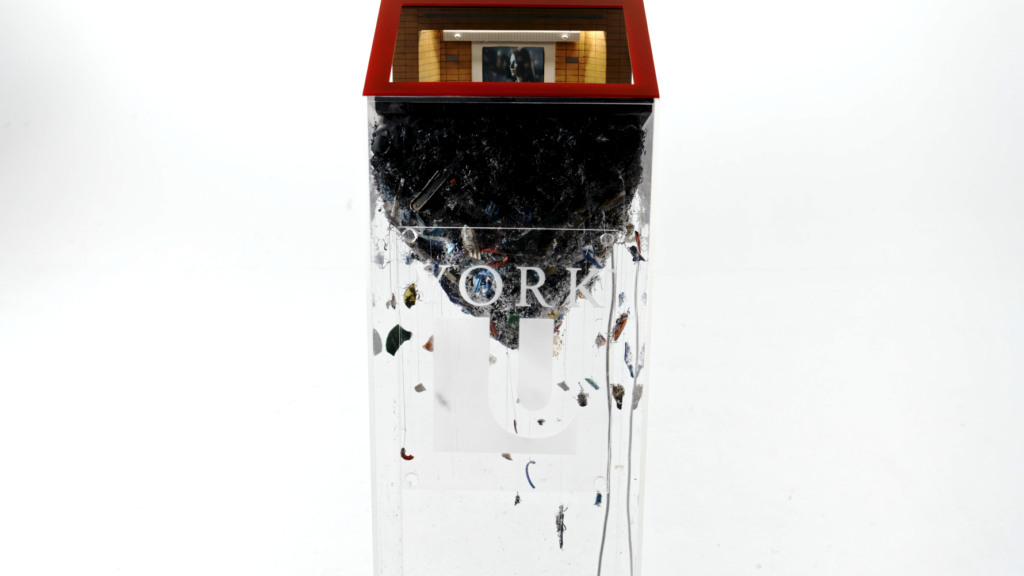World’s tiniest lecture hall presents big thinking on environmental threat
Tags:
On behalf of Lassonde School of Engineering, thank you to Dr. Shooka Karimpour, assistant professor in the Department of Civil Engineering, for her involvement in York University’s miniature art installation in which she is portrayed, delivering a micro-lecture. Highlighting the world’s biggest problems in simple, accessible ways that people can really grasp, prompts discussion and ideation. To advance the UN Sustainable Development Goals, it’s crucial to raise awareness of the issues and explore solutions through creative, engaging mediums like this artwork, which inspires the next generation of creators to make positive change.
– Jane Goodyer, dean, Lassonde School of Engineering
This story originally appeared on YFile.
Lassonde School of Engineering Assistant Professor Shooka Karimpour reflects on her experience delivering a micro-lecture in the world’s tiniest lecture hall about our world’s growing problem of microplastics.

Last week, York University launched the world’s tiniest lecture hall to bring focus to the big issue of microplastics and their impact on the environment. The tiny lecture hall is part of a new art installation unveiled at Vari Hall on York’s Keele Campus and the Centre of Excellence at the Glendon Campus.
It takes the form of an exact replica of a theatre-style lecture hall but is the size of a lecture podium. The transparent plexi-glass model – which is constructed mostly from recycled plastics collected from Lake Ontario – features tiny chairs, a tiny screen, a tiny professor speaking to tiny people. There’s a scannable QR Prof. code that launches a virtual entrance to a riveting, six-minute micro-lecture on the universal threat of microplastics delivered by Lassonde School of Engineering Assistant Professor Shooka Karimpour.
Karimpour is a researcher focused on hydrodynamics and professor in the Department of Civil Engineering at Lassonde. Through her research, she is leading an effort to get us to rethink our use (and eventual ingestion) of plastic and it’s within the world’s tiniest lecture hall that she delivers her big and powerful message on the problem of microplastics.
YFile spoke with Karimpour immediately following the launch of the world’s tiniest lecture hall to hear first-hand from her about why she took part in this innovative endeavour.

Q. What is a micro-lecture?
SK. A micro-lecture is a lecture delivered in a brief, concise microformat. This micro-lecture is presented using very innovative filmmaking techniques to provide the presentation in a micro-format as well. So, in addition to being short, concise and presented in a micro-format, they are now offered in a micro-scale.
Q. How did you get involved with this very tiny lecture hall?
SK. My research is in environmental hydrodynamics so I look at the mobility of natural matters like sediments and pollutants in water bodies. Over the last few years, I have become interested in microplastics and how they move in water and I have been successful in securing meaningful partnerships with government agencies and private entities, and the word has gone around. I think when launching this lecture, the University considered that a micro-lecture and microplastics would be an interesting and meaningful wordplay. They reached out to me and I gladly accepted.

Q. Tell us about your experience actually making this micro-lecture.
SK. This was several months in the making. We started in June and it is now October. It has been a very pleasant experience working with the York team and the creative agency. This is a big environmental issue that the world is dealing with and everyone working in this project was very curious and dedicated to learning more about microplastics. The creative team helped me quite a lot along the way to fine tune my language, highlight the points they found to be important. Overall, it was a very good experience. As researchers, we sit in our labs and get buried in proposals and papers and there is a gap in how we translate our work to a broader audience. These type of content deliveries help to fill that gap.
Q. What was the most interesting part of the experience creating this micro-lecture?
SK. The unveiling of the tiny lecture hall installation has been so very enjoyable.
I really enjoyed the journey and working in a completely different setting. All the filmmaking techniques, the multiple cameras, lights and direction helped me highlight the urgency of this environmental issue and deliver that message in a more captivating way.

Q. Can you summarize in your own words the unseen enormity of microplastics?
SK. Microplastics and plastic pollution are a very big issue. When you think about microplastics, they have invaded every part of the Earth’s waterbodies. During in-situ detection-based research, microplastics have been found near their source, such as wastewater treatment systems and close to rivers. Microplastics have also been found in remote areas, such as in deep sea ocean sediments and in the Arctic. This micro-lecture highlights the source and threat of microplastics – and plastic pollution in general – to aquatic ecosystems and human health. In addition to explaining what microplastics are, I also provide information on how we can be more plastic conscious individually and as a result become a more plastic conscious society.
Q. What are the most important steps you recommend that we do to curb our use of plastics?
SK. We should refrain from using single-use plastics. I read that the average life of a plastic product is only several minutes! Mismanaged single-use plastics are abundantly found in the environment, so we should try to stay away from single-use plastics, such as plastic bottles, food containers, as much as possible. Really the solution is to reduce, reuse, and recycle. Canada is taking great steps into controlling plastic pollution by banning microbeads in cosmetic products and is moving towards a ban on single-use plastics. As responsible citizens, it is very important to be active on this very important environmental issue. Talk to your family members, neighbours, and people in your social circle about the plastic problem and help them understand that we are in a plastic pollution crisis.
The QR code to Karimpour’s micro-lecture can be accessed by the York University community by visiting the art installation at Vari Hall or the Glendon Centre of Excellence. Wider audiences can find the micro-lecture at https://www.yorku.ca/rightthefuture/stories/microlecture/.